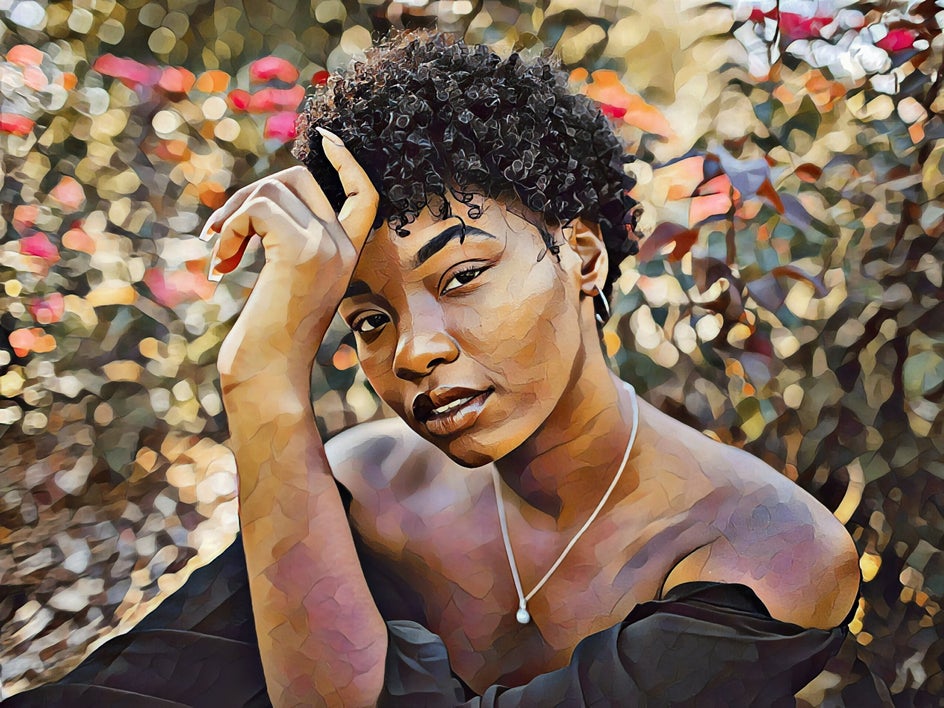Oil Paintings for Sale Featuring Renowned International Painters
Oil Paintings for Sale Featuring Renowned International Painters
Blog Article
Checking out Everything About Oil Paintings: A Guide to Recognizing Their Elegance and Worth
Oil paints have captivated audiences for centuries, supplying a glance right into the creative proficiency of numerous ages. Their rich history is linked with cutting-edge techniques and profound psychological expression. Comprehending the materials and methods behind these art work can enhance appreciation. In addition, the marketplace for oil paintings presents possibilities for capitalists and enthusiasts alike. As one discovers this remarkable globe, the question arises: what makes an oil painting genuinely important?
The Background of Oil Painting: A Trip With Time
Oil paint has roots that date back to old times, it really prospered during the Renaissance, when musicians found its convenience and rich shade capacity. Early examples can be mapped to the 7th century, with methods evolving especially throughout cultures. The tool came to be popular in Northern Europe in the 15th century, particularly via the works of musicians like Jan van Eyck, that pioneered its usage for in-depth realistic look and dynamic shades. This duration noted a departure from tempera paints, permitting higher deepness and texture. As oil painting spread, it affected plenty of artists, bring about work of arts by renowned numbers such as Leonardo da Vinci and Rembrandt. The medium's legacy continues, forming the art world well into contemporary times.
Recognizing Oil Paints: Materials and Techniques
As artists discover the globe of oil paints, they encounter a diverse range of products and techniques that define this medium. The main elements of oil paint consist of pigments, which give shade, and drying oils, such as linseed, that bind the pigments and assist in application. Numerous ingredients can modify the paint's texture and drying time, enhancing adaptability. Strategies like glazing, where clear layers are accumulated, and impasto, which involves applying thick paint, permit different visual impacts. Furthermore, using brushes, combination blades, and also fingers can produce special appearances and surfaces. Understanding these techniques and materials enables musicians to totally reveal their creativity and attain the desired impact in their art work.
The Function of Color in Oil Paints
Color plays a crucial role in oil paints, affecting both aesthetic charm and emotional vibration. Comprehending shade concept fundamentals, consisting of the relationships in between colors, can enhance a musician's capability to convey state of mind and environment. Additionally, grasping color mixing strategies enables for greater depth and richness in a paint's palette.

Shade Theory Basics
Recognizing shade theory is essential for musicians collaborating with oil paints, as it creates the foundation for creating aesthetically engaging and unified structures. Color concept encompasses the research of how shades communicate, the shade wheel, and the connections in between main, secondary, and tertiary shades. Musicians use corresponding colors to enhance contrasts and develop centerpieces, while similar shades promote unity and cohesiveness within an item. In addition, the concepts of cozy and great colors affect the assumption of depth and space in a paint. Comprehending these concepts allows musicians to manipulate shade properly, directing the viewer's eye and connecting their intended message. Proficiency of color concept ultimately improves an artist's capacity to communicate emotions and ideas via their work.
Psychological Impact of Shade
The emotional effect of color in oil paintings plays an essential role in how viewers regard and connect with art work. Shades evoke certain feelings and moods, affecting the customer's emotion. Cozy hues like reds and oranges can produce a sense of warmth and power, while awesome tones such as blues and eco-friendlies commonly stimulate peace or self-questioning. Artists purposefully pick shade combinations to improve narrative aspects, guiding the target market's emotional journey. The saturation and contrast of colors further amplify these effects, attracting attention and creating focus. Inevitably, the interaction of shades in oil paintings not only enhances their aesthetic allure yet likewise works as an effective medium for emotional expression, enriching the customer's experience and analysis.
Shade Combining Techniques
While lots of elements of oil painting add to the total structure, grasping color blending methods is necessary for accomplishing wanted results and depth. Color blending can be approached through various techniques, including the additive and subtractive processes. Additive blending involves incorporating colors of light, while subtractive mixing relies upon pigments, where colors mix to produce new tones. Artists usually use a restricted combination to create unified works, understanding the partnerships in between main, secondary, and tertiary shades. Methods such as glazing and scumbling even more enhance deepness and brightness. By skillfully blending shades, an artist can stimulate emotions, develop prime focus, and achieve a feeling of realism, inevitably boosting the painting's visual and psychological effect.
Famous Oil Painters and Their Iconic Works

Famed for their mastery of shade and strategy, oil painters have actually created a few of one of the most celebrated artworks in background. Renowned artists like Vincent van Gogh mesmerized target markets with his stirring brushwork in "Starry Night," while Claude Monet's "Perception, Sunrise" laid the foundation for Impressionism. Leonardo da Vinci's "Mona Lisa" continues to be an enduring symbol of creative wizard, showcasing his ability in recording human expression. On the other hand, Rembrandt's "The Night Watch" illustrates his ingenious use light and darkness. Other significant figures include Pablo Picasso, that changed contemporary art with his strong testing in works like "Les Demoiselles d'Avignon," and Georgia O'Keeffe, whose vibrant depictions of landscapes and blossoms aided specify American innovation. Each artist's distinct style oil paintings for sale added significantly to the oil paint landscape.
Just how to Examine the High Quality of an Oil Painting
Reviewing the high quality of an oil painting involves a mindful evaluation of craftsmanship strategies, along with an analysis of color and make-up. Observing brushwork, layering, and the application of paint can expose the artist's ability degree. Furthermore, the interplay of shades and the overall arrangement of elements contribute considerably to the paint's visual worth.
Examining Craftsmanship Techniques
A precise evaluation of workmanship techniques is crucial for establishing the high quality of an oil painting. Critics should initially examine the application of paint; thick, distinctive brushstrokes may suggest an experienced hand, while extremely uniform applications can suggest a lack of deepness. oil paintings for sale. The layering technique is likewise essential; the existence of lusters and varied thickness can boost luminosity and intricacy. In addition, the quality of the materials utilized, such as the canvas and pigments, plays a substantial role in durability and general visual. Focus to detail in aspects like sides and shifts between colors mirrors the artist's commitment to their craft. Eventually, these strategies contribute to the painting's psychological influence and market price, acting as signs of the musician's skill and intent
Examining Color and Structure
While reviewing the top quality of an oil painting, one should concentrate on the interaction of shade and make-up, as these elements are fundamental to the artwork's general effect. Color selections can establish and evoke feelings state of mind; therefore, the artist's scheme should be taken a look at for consistency and contrast. A well-balanced make-up directs the customer's eye and develops a sense of unity. Artists commonly use techniques like the policy of thirds or leading lines to boost visual interest. Furthermore, using light and darkness can add depth, improving the three-dimensionality of the paint. Inevitably, an effective oil paint weds color and structure, involving the customer and inviting a deeper gratitude of the artist's vision and method.
Taking care of and Preserving Oil Paintings
Appropriate care and conservation of oil paints is essential for keeping their stability and durability. To secure these art work, it is vital to present them far from straight sunlight, which can create fading and discoloration. Preserving a stable setting with regulated temperature level and humidity further help in protecting against damages. Cleaning up ought to be done gently making use of a soft, dry cloth, staying clear of any type of rough chemicals that might harm the paint or varnish. Normal assessments for indications of wear and tear, such as breaking or flaking, are suggested. When delivering or keeping oil paintings, appropriate padding and framework are necessary to stay clear of physical injury. Eventually, diligent treatment adds to the visual allure and value of oil paints in time.
The Marketplace for Oil Paintings: Spending and collecting
Recognizing the market characteristics for oil paintings is crucial for financiers and enthusiasts alike. The value of these art work is affected by various aspects, consisting of the artist's track record, historic relevance, and existing trends. Collection agencies usually seek pieces that reverberate directly while considering prospective recognition in value. Auctions and galleries serve as key places for trading, with rates varying based on demand and rarity. Purchasing oil paints requires study into the market, along with an understanding of authenticity and provenance. Furthermore, arising artists may offer opportunities for considerable returns, while established names can command high prices. In general, a critical strategy to accumulating can generate both visual satisfaction and economic benefits.

Often Asked Concerns
What Are the Ecological Influences of Oil Painting Materials?
The environmental effects of oil painting materials consist of the launch of unpredictable organic compounds (VOCs), unsafe waste generation, and resource removal for pigments. These aspects add to contamination and eco-friendly deterioration, raising worries amongst ecologically conscious musicians and consumers.
Exactly How Do Various Canvases Affect Oil Paint Outcomes?
Different canvases influence oil paint results significantly. Absorbency, surface area, and structure quality can alter paint application, drying times, and shade vibrancy. Musicians typically pick specific canvases to accomplish preferred results and improve their artistic expression.
Can Oil Paintings Be Brought Back if Harmed?
If harmed, Oil paints can indeed be brought back. Expert conservators make use of numerous techniques to repair splits, tidy surface areas, and address discoloration, ensuring that the art work retains its original appeal and value for future generations.
What Are the Indicators of an Initial Oil Paint?
The indicators of an initial oil paint include noticeable brush strokes, texture variations, and an uneven canvas weave (oil paintings for sale). In addition, authenticity might be verified with provenance, trademarks, and the existence of a varnish layer one-of-a-kind to oil tools
Just How Has Innovation Influenced Modern Oil Painting Techniques?
Innovation has significantly influenced modern-day oil paint methods by introducing digital devices for planning, boosted materials for structure and longevity, and on-line platforms for sharing and offering art, thereby expanding musicians' creative opportunities and target market get to. Oil paint has roots that date back to ancient times, it really prospered throughout the Renaissance, when musicians discovered its adaptability and abundant shade potential. The emotional influence of shade in oil paints plays an important role in just how visitors attach and regard with art work. While many aspects of oil paint add to the overall make-up, grasping shade mixing strategies is necessary for accomplishing wanted effects and depth. Evaluating the top quality of an oil paint involves a mindful analysis of workmanship methods, as well as an evaluation of color and composition. While assessing the high quality of an oil painting, one should concentrate on the interaction of color and structure, as these aspects are basic to the artwork's total effect.
Report this page